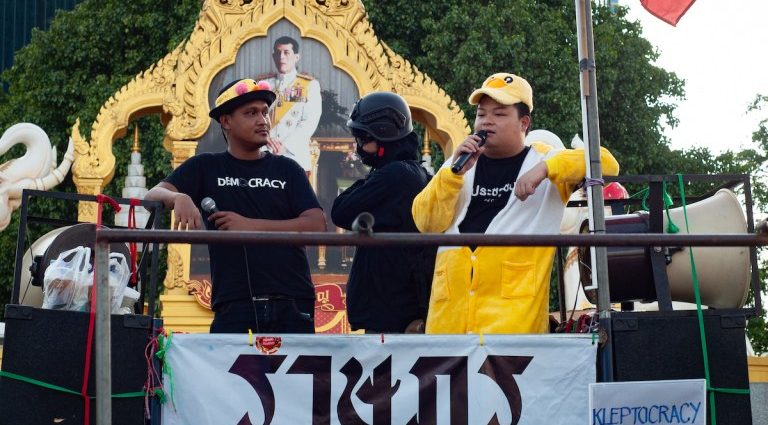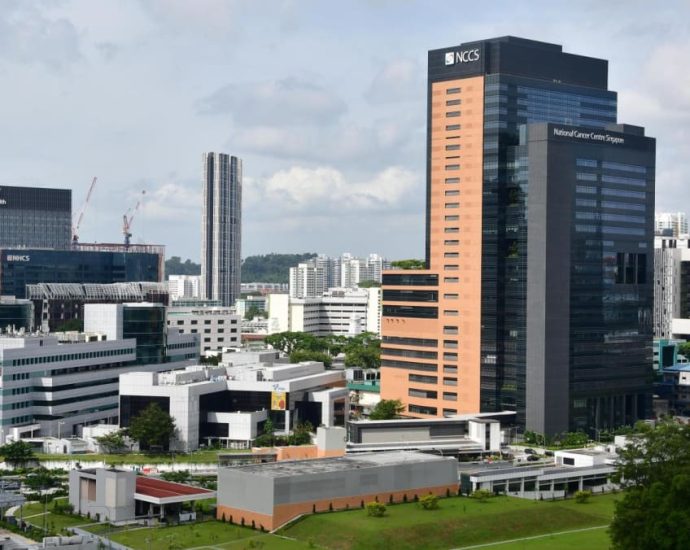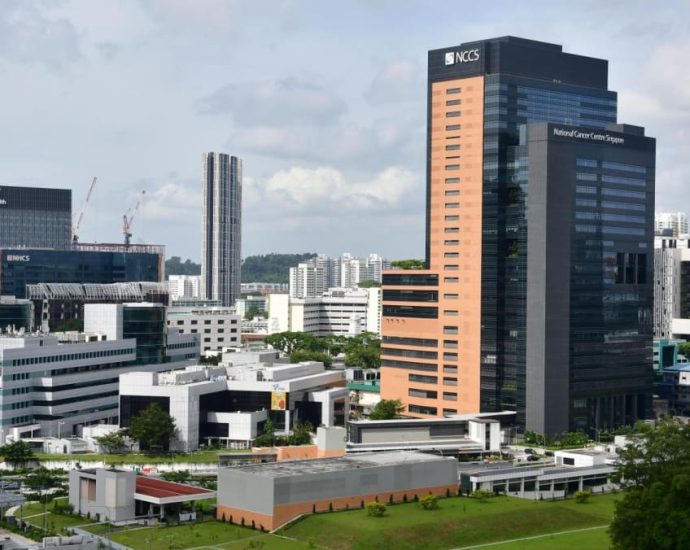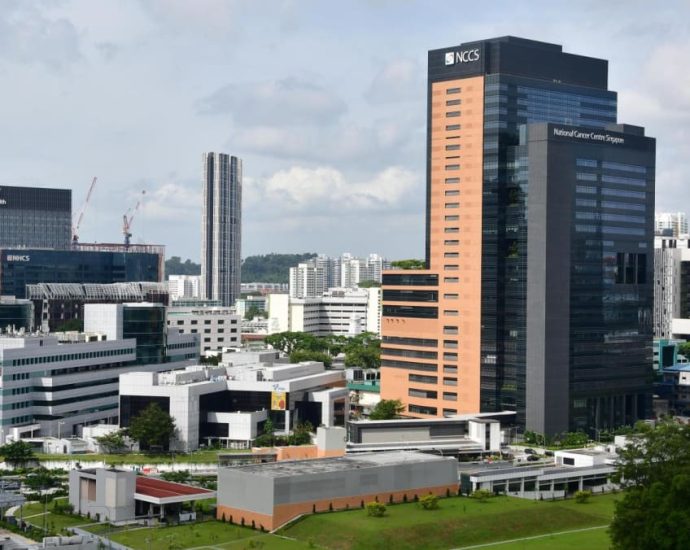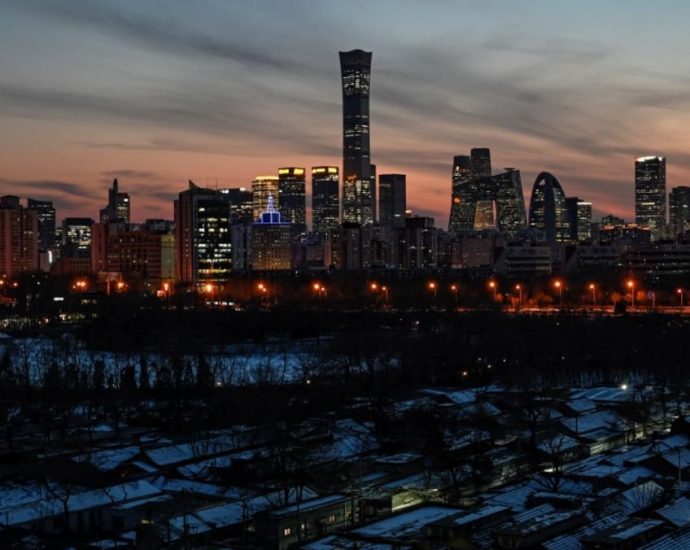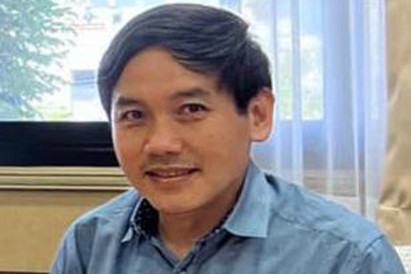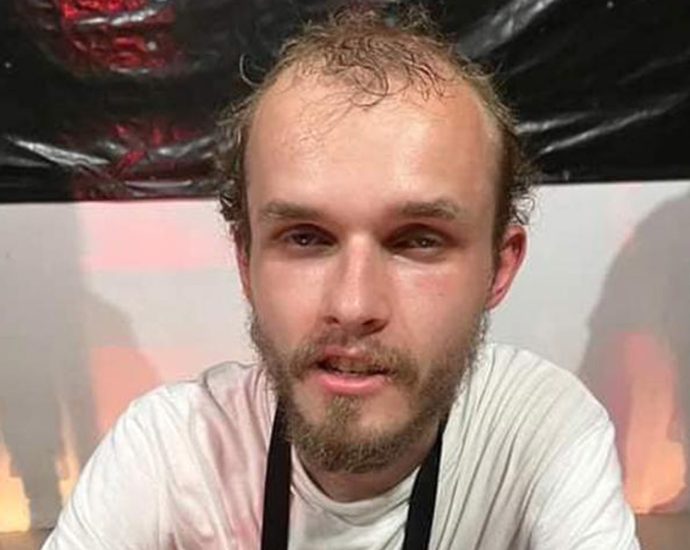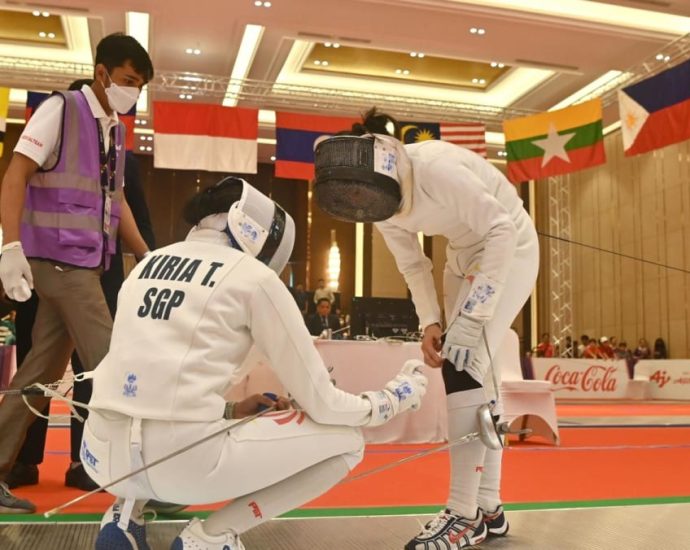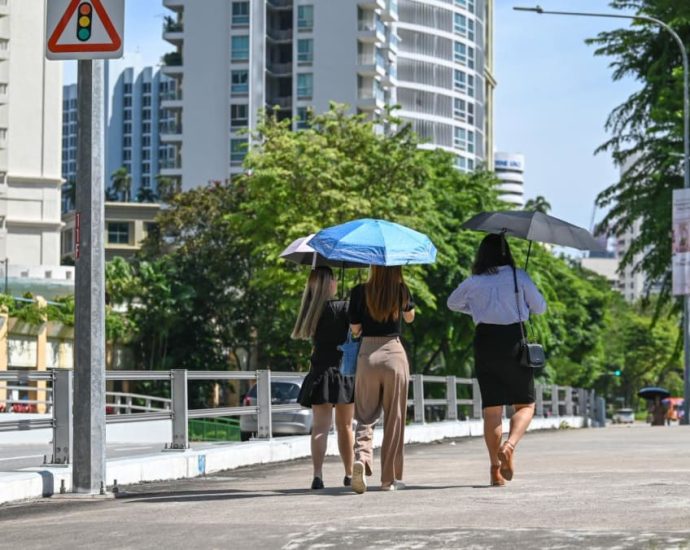What Pita would mean for Thailand
BANGKOK _ Pita Limjaroenrat is deliberately entering a political minefield, littered with politicians and governments which failed.
Wealthy Pita’s resounding victory in Sunday’s nationwide election to try and become Thailand’s youngest prime minister was a vivid rejection by a large swath of Thai society against the military’s political domination and coups.
Pita, 42, is now struggling to have his Move Forward Party (MFP) form a coalition government uniting smaller parties, while litigious knives sharpen around him.
Projecting robust defiance, Pita said the day after his election win that it would be “quite far-fetched” for anyone to oppose his victory.
“With the consensus that came out of the election, it will be quite a hefty price to pay for someone who is thinking of abolishing the election results, or forming a minority government,” Pita said at a celebratory reception.
Ballots from the May 14 election for the 500-member House of Representatives gave him and his MFP the most votes of all candidates and parties.
Likely in July or August, the 250-seat Senate – appointed by a now-defunct junta that held power after a 2014 coup – joins the newly elected House to confirm the next prime minister.
“The sentiment of the era has changed. And it was the right timing,” Pita said. “I would like to announce here that the Move Forward Party is ready to lead the forming of the future government.”
Previous opposition politicians tried to do what Pita plans, and they ended up dissolved and banned by the Constitution Court for financial conflicts, or allowed to become prime minister but were later toppled in a military coup.
Educated at Harvard and MIT, Pita’s US experience may make it easier for Washington to engage with Bangkok, which enjoys good relations with the Pentagon.
“Thais will prove that ballot is stronger than the bullets, back like how president Abraham Lincoln said 200 years ago, will happen in Thailand this year,” Pita said, according to the Australian Broadcasting Corp.
Pita’s political base of enthusiastic, energetic, imaginative young people expanded when they convinced older relatives to vote MFP.
Pita and thousands of his cheering supporters thronged Bangkok’s streets on May 15 circling Democracy Monument, a site often used for pro-democracy and anti-coup protests.
Pita presents himself as the opposite of the grim, demanding, military leaders who seized power in coups in 2006 and 2014, which embroiled this Buddhist-majority nation in street clashes, insurrections and other disruptions.

His father was an Agriculture Ministry adviser, and his uncle was an assistant to Thailand’s former prime minister Thaksin Shinawatra, who was ousted in the 2006 coup.
After a childhood spent partially in New Zealand, Pita graduated from Harvard University with a master’s in public policy and from the Massachusetts Institute of Technology with an MBA.
He put those ideas into practice at his late father’s rice bran oil company and other businesses, before divorcing his actress-model wife and plunging into politics.
Among Thailand’s gossipy “hi-so” – high society – money-flaunting elite, Pita gained a spotlight as an “eligible bachelor” raising his pre-teen daughter.
Pita then joined the new, liberal, anti-military Future Forward Party (FFP), which was doomed to dissolution just months after winning 81 seats and placing third in the 2019 election.
In November 2019, its billionaire leader Thanathorn Juangroongruangkit was convicted by the Constitutional Court for a financial conflict of interest that banned him from politics.
The court disbanded the FFP outright in February 2020 and Move Forward soon thereafter became the party’s new incarnation with Pita replacing the revolutionary and often fiery Thanathorn as its less-confrontational leader.
Some, however, suspected Pita was intentionally put up as a frontman to give the MFP a more acceptable “centrist” image while much more radical members lurk in the background.
If he becomes prime minister, Pita wants to redistribute political and financial power and assistance to communities throughout the country, instead of prioritizing and centralizing power in the pampered capital Bangkok.
He also plans to challenge Thailand’s large, family-run monopolistic corporations to allow for greater diversification for smaller businesses and entrepreneurs.
More difficult, he also wants to end the military’s coup-empowered influence over the 250-seat Senate, which was created to “screen” and control politicians elected to Parliament’s House of Representatives. Pita wants the Senate to be elected.
He and his party also want an end to military conscription and have boldly insisted on opening Thailand’s discreetly cloaked, influential constitutional monarchy to more public scrutiny and “reform.”

Thousands of young people challenged police in Bangkok’s streets in 2020 with marches, satirical agitprop street theater, brawls, arson and other acts in a sometimes raucous call for royal reform.
Pita knows those street demands resulted in arrests, imprisonment, injuries and intimidation, including via maximum 15-year prison sentences for anyone convicted under the Article 112 lese majeste law, which shields the monarchy from criticism.
Some of Pita’s closest colleagues in the MFP were active in those protests. He now wants to upgrade the debate from Bangkok’s mean streets to the grandiose halls of Parliament.
The subject of the monarchy is something most parliamentarians will likely not want to discuss in any way, to avoid legal problems or because they are satisfied with the status quo.
“We will use the Parliament to make sure that it is a comprehensive discussion with maturity, with transparency, in how we should move forward in the relationship between the monarchy and the masses,” Pita said on May 15, according to the BBC.
On election day, Pita told the Bangkok Post: “No matter what, we will push for royal lese majeste law reform.”
Pita and his MFP are currently angling to take control of key ministries, reportedly including the Ministry of Defense. The challenge to military and royal authority has already sparked coup talk.
However, a coup to stop Pita is unlikely in the immediate future, namely because his conservative opponents have easier ways to try first.
Pita is already trying to shrug off allegations that he is involved in a financial conflict of interest because he allegedly holds shares in a media company, which is disallowed for politicians under Thai election law.

Pita says he is innocent, but faces a possible trial at the Constitutional Court. A political opponent has petitioned the Election Commission and the National Anti-Corruption Commission to look into Pita’s finances and recommend his case to the court.
A key question focuses on Pita’s father – who died owning shares in a media company – and if Pita inherited those shares.
“I am not worried about the case, because the shares are not mine,” Pita recently tweeted. “It’s a family heritage, and I’m the manager of that. I informed the National Anti-Corruption Commission about this a long time ago.”
Richard S Ehrlich is a Bangkok-based American foreign correspondent reporting from Asia since 1978. Excerpts from his two new nonfiction books, “Rituals. Killers. Wars. & Sex. — Tibet, India, Nepal, Laos, Vietnam, Afghanistan, Sri Lanka & New York” and “Apocalyptic Tribes, Smugglers & Freaks” are available here.
New National Cancer Centre Singapore building officially opens
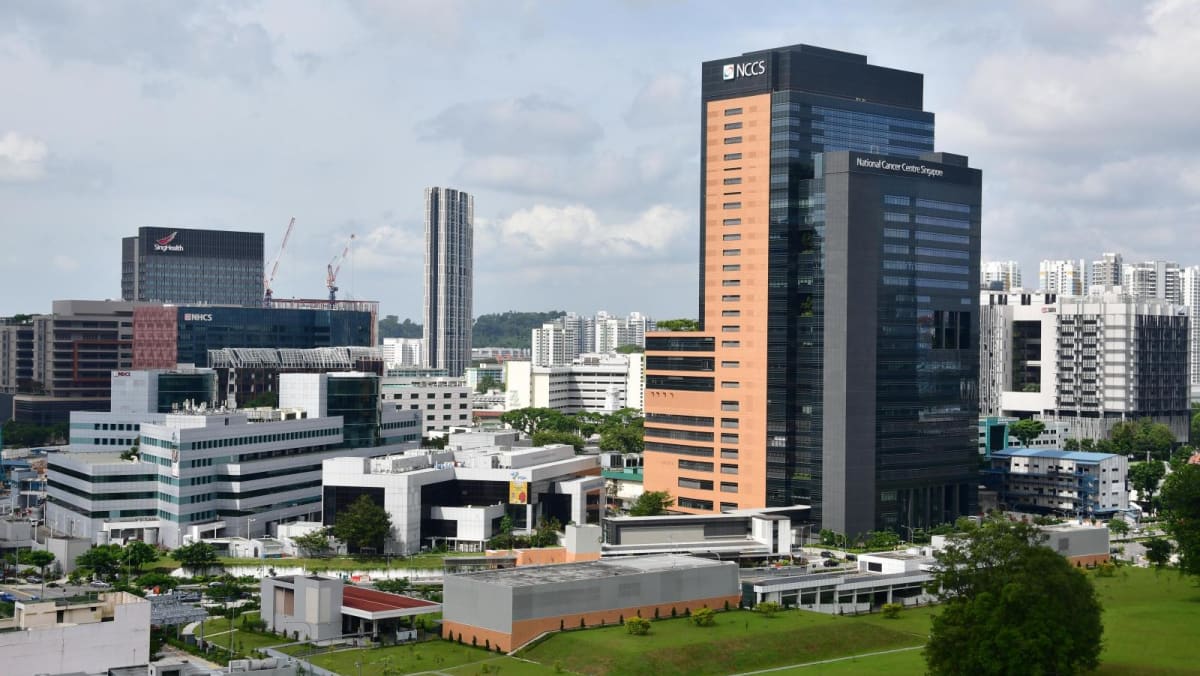
SINGAPORE: The new 24-storey National Cancer Centre Singapore (NCCS) was officially opened by Deputy Prime Minister Lawrence Wong on Thursday (May 18).
Accessible via a direct link bridge to Outram Park MRT, the new centre – which is five times larger than the previous premise – has nearly double the number of chemotherapy recliner chairs and beds as well as consultation rooms compared to before.
There are 108 recliner chairs and beds for chemotherapy treatment and 64 consultation rooms. In addition, the building also has three day-surgery operating theatres, two endoscopy suites and 10 radiation therapy facilities.
At the Ambulatory Treatment Unit (ATU), which sees around 150 patients each day, robots deliver prepared chemotherapy drugs from the oncology pharmacy to treatment suites.
According to NCCS, this helps to free up nurses to spend more time attending to patients.
The national compounding hub also features robotic arms to expedite the safe and efficient preparation of intravenous chemotherapy drugs.
Operations in the new building started progressively from December 2022, with all services fully operational since March this year.
While the centre expects to be able to handle double the number of patient visits compared to before by 2030, NCCS’ CEO William Hwang said this will take some time.
“We have a doubling in capacity, in terms of the beds available and consultation rooms and otherwise, but capacity is also a factor of efficiency as well,” said Professor Hwang during a media briefing on May 10.
“How that will pan out in the subsequent years is hard to say except to say that we were previously seeing about 160,000 patient visits a year and with a doubling capacity, hopefully we will have a doubling, in terms of ability to see those patients, contingent on … getting more manpower in the later years,” he added.
He added that the centre has been progressively recruiting more staff over the past few years.
Speaking at the event, Mr Wong said the opening of the new centre was timely, given Singapore’s ageing population.
“The sobering fact is that one in four Singaporeans are likely to develop some form of cancer over their lifetimes,” he said, noting that close to 40 per cent of those diagnosed with cancer currently are aged 70 and above.
“As our population continues to age, we can, unfortunately, expect more people to be diagnosed with cancer,” he added.
According to the Singapore Cancer Registry 2020 annual report, which was published in December last year, nearly 81,000 cancer cases were reported in Singapore between 2016 and 2020.
The new NCCS building was part of the first phase of extensive redevelopment and expansion plans for the Singapore General Hospital (SGH) Campus, which was first unveiled in 2016 by Prime Minister Lee Hsien Loong to meet growing healthcare needs.
Last year, Outram Community Hospital – which was also part of the first phase of the master plan – was officially opened.
During the launch in January last year, Health Minister Ong Ye Kung said that the total development budget for Phase One is about S$4 billion.
Other key developments include the Emergency Medicine Building, which will open progressively from 2024. This will be followed by the new SGH Elective Care Centre and National Dental Centre, which are expected to open by 2027.
Mr Ong had added that the second phase of the master plan will see the development of a new SGH complex and an improved internal road network.
RESEARCH AND ADVANCED TREATMENTS
Besides outpatient care services, the new centre also houses research facilities, where scientists and clinician-scientists can collaborate and drive research that can translate into better health outcomes.
This includes novel technologies to aid in complex single-cell, gene and protein profiling, enabling scientists to uncover the mechanics and development of cancer.
There is also a dedicated facility with chemotherapy chairs and beds for early-phase clinical trials, offering patients access to new cancer therapies.
The building also houses a tissue bank that will contribute to a better understanding of the evolution and development of cancer in Asian populations.
In addition, patients at the new NCCS will also have access to advanced cancer treatments such as proton therapy, which is an advanced type of radiation treatment, following regulatory approval.
NCCS’ deputy CEO (Clinical) Lim Soon Thye said the co-location and integration of research and clinical services in the new building will help to boost collaboration and drive scientific inquiry which could lead to better patient outcomes.
Beyond improving cancer care, Mr Wong said the country must do more upstream through better prevention and early detection.
“Our real goal is to reduce the incidence of cancer to begin with,” he said.
“We are allocating a lot more resources too, not just to treat people who are sick, but to prevent sickness to begin with.”
This includes free screenings for breast, cervical, and colorectal cancer under the voluntarily national primary care programme Healthier SG.
National Cancer Centre Singapore moves to new, bigger building with increased capacity

SINGAPORE: The new 24-storey National Cancer Centre Singapore (NCCS) was officially opened by Deputy Prime Minister Lawrence Wong on Thursday (May 18).
Accessible via a direct link bridge to Outram Park MRT, the new centre – which is five times larger than the previous premises – has nearly double the number of chemotherapy recliner chairs and beds as well as consultation rooms compared to before.
There are 108 recliner chairs and beds for chemotherapy treatment and 64 consultation rooms. In addition, the building also has three day-surgery operating theatres, two endoscopy suites and 10 radiation therapy facilities.
At the Ambulatory Treatment Unit (ATU), which sees around 150 patients each day, robots deliver prepared chemotherapy drugs from the oncology pharmacy to treatment suites.
According to NCCS, this helps to free up nurses to spend more time attending to patients.
The national compounding hub also features robotic arms to expedite the safe and efficient preparation of intravenous chemotherapy drugs.
Operations in the new building started progressively from December 2022, with all services fully operational since March this year.
While the centre expects to be able to handle double the number of patient visits compared to before by 2030, NCCS’ CEO William Hwang said this will take some time.
“We have a doubling in capacity, in terms of the beds available and consultation rooms and otherwise, but capacity is also a factor of efficiency as well,” said Professor Hwang during a media briefing on May 10.
“How that will pan out in the subsequent years is hard to say except to say that we were previously seeing about 160,000 patient visits a year and with a doubling capacity, hopefully we will have a doubling, in terms of ability to see those patients, contingent on … getting more manpower in the later years,” he added.
He added that the centre has been progressively recruiting more staff over the past few years.
Speaking at the event, Mr Wong said the opening of the new centre was timely, given Singapore’s ageing population.
“The sobering fact is that one in four Singaporeans are likely to develop some form of cancer over their lifetimes,” he said, noting that close to 40 per cent of those diagnosed with cancer currently are aged 70 and above.
“As our population continues to age, we can, unfortunately, expect more people to be diagnosed with cancer,” he added.
According to the Singapore Cancer Registry 2020 annual report, which was published in December last year, nearly 81,000 cancer cases were reported in Singapore between 2016 and 2020.
The new NCCS building was part of the first phase of extensive redevelopment and expansion plans for the Singapore General Hospital (SGH) Campus, which was first unveiled in 2016 by Prime Minister Lee Hsien Loong to meet growing healthcare needs.
Last year, Outram Community Hospital – which was also part of the first phase of the master plan – was officially opened.
During the launch in January last year, Health Minister Ong Ye Kung said that the total development budget for Phase One is about S$4 billion.
Other key developments include the Emergency Medicine Building, which will open progressively from 2024. This will be followed by the new SGH Elective Care Centre and National Dental Centre, which are expected to open by 2027.
Mr Ong had added that the second phase of the master plan will see the development of a new SGH complex and an improved internal road network.
RESEARCH AND ADVANCED TREATMENTS
Besides outpatient care services, the new centre also houses research facilities, where scientists and clinician-scientists can collaborate and drive research that can translate into better health outcomes.
This includes novel technologies to aid in complex single-cell, gene and protein profiling, enabling scientists to uncover the mechanics and development of cancer.
There is also a dedicated facility with chemotherapy chairs and beds for early-phase clinical trials, offering patients access to new cancer therapies.
The building also houses a tissue bank that will contribute to a better understanding of the evolution and development of cancer in Asian populations.
In addition, patients at the new NCCS will also have access to advanced cancer treatments such as proton therapy, which is an advanced type of radiation treatment, following regulatory approval.
NCCS’ deputy CEO (Clinical) Lim Soon Thye said the co-location and integration of research and clinical services in the new building will help to boost collaboration and drive scientific inquiry which could lead to better patient outcomes.
Beyond improving cancer care, Mr Wong said the country must do more upstream through better prevention and early detection.
“Our real goal is to reduce the incidence of cancer to begin with,” he said.
“We are allocating a lot more resources too, not just to treat people who are sick, but to prevent sickness to begin with.”
This includes free screenings for breast, cervical, and colorectal cancer under the voluntarily national primary care programme Healthier SG.
National Cancer Centre Singapore moves to new building five times larger and with double the bed capacity

SINGAPORE: The new 24-storey National Cancer Centre Singapore (NCCS) was officially opened by Deputy Prime Minister Lawrence Wong on Thursday (May 18).
Accessible via a direct link bridge to Outram Park MRT, the new centre – which is five times larger than the previous premises – has nearly double the number of chemotherapy recliner chairs and beds as well as consultation rooms compared to before.
There are 108 recliner chairs and beds for chemotherapy treatment and 64 consultation rooms. In addition, the building also has three day-surgery operating theatres, two endoscopy suites and 10 radiation therapy facilities.
At the Ambulatory Treatment Unit (ATU), which sees around 150 patients each day, robots deliver prepared chemotherapy drugs from the oncology pharmacy to treatment suites.
According to NCCS, this helps to free up nurses to spend more time attending to patients.
The national compounding hub also features robotic arms to expedite the safe and efficient preparation of intravenous chemotherapy drugs.
Operations in the new building started progressively from December 2022, with all services fully operational since March this year.
While the centre expects to be able to handle double the number of patient visits compared to before by 2030, NCCS’ CEO William Hwang said this will take some time.
“We have a doubling in capacity, in terms of the beds available and consultation rooms and otherwise, but capacity is also a factor of efficiency as well,” said Professor Hwang during a media briefing on May 10.
“How that will pan out in the subsequent years is hard to say except to say that we were previously seeing about 160,000 patient visits a year and with a doubling capacity, hopefully we will have a doubling, in terms of ability to see those patients, contingent on … getting more manpower in the later years,” he added.
He added that the centre has been progressively recruiting more staff over the past few years.
Speaking at the event, Mr Wong said the opening of the new centre was timely, given Singapore’s ageing population.
“The sobering fact is that one in four Singaporeans are likely to develop some form of cancer over their lifetimes,” he said, noting that close to 40 per cent of those diagnosed with cancer currently are aged 70 and above.
“As our population continues to age, we can, unfortunately, expect more people to be diagnosed with cancer,” he added.
According to the Singapore Cancer Registry 2020 annual report, which was published in December last year, nearly 81,000 cancer cases were reported in Singapore between 2016 and 2020.
The new NCCS building was part of the first phase of extensive redevelopment and expansion plans for the Singapore General Hospital (SGH) Campus, which was first unveiled in 2016 by Prime Minister Lee Hsien Loong to meet growing healthcare needs.
Last year, Outram Community Hospital – which was also part of the first phase of the master plan – was officially opened.
During the launch in January last year, Health Minister Ong Ye Kung said that the total development budget for Phase One is about S$4 billion.
Other key developments include the Emergency Medicine Building, which will open progressively from 2024. This will be followed by the new SGH Elective Care Centre and National Dental Centre, which are expected to open by 2027.
Mr Ong had added that the second phase of the master plan will see the development of a new SGH complex and an improved internal road network.
RESEARCH AND ADVANCED TREATMENTS
Besides outpatient care services, the new centre also houses research facilities, where scientists and clinician-scientists can collaborate and drive research that can translate into better health outcomes.
This includes novel technologies to aid in complex single-cell, gene and protein profiling, enabling scientists to uncover the mechanics and development of cancer.
There is also a dedicated facility with chemotherapy chairs and beds for early-phase clinical trials, offering patients access to new cancer therapies.
The building also houses a tissue bank that will contribute to a better understanding of the evolution and development of cancer in Asian populations.
In addition, patients at the new NCCS will also have access to advanced cancer treatments such as proton therapy, which is an advanced type of radiation treatment, following regulatory approval.
NCCS’ deputy CEO (Clinical) Lim Soon Thye said the co-location and integration of research and clinical services in the new building will help to boost collaboration and drive scientific inquiry which could lead to better patient outcomes.
Beyond improving cancer care, Mr Wong said the country must do more upstream through better prevention and early detection.
“Our real goal is to reduce the incidence of cancer to begin with,” he said.
“We are allocating a lot more resources too, not just to treat people who are sick, but to prevent sickness to begin with.”
This includes free screenings for breast, cervical, and colorectal cancer under the voluntarily national primary care programme Healthier SG.
China fines comedy company US$2 million over army joke
BEIJING: Chinese authorities fined a comedy company millions of yuan on Wednesday (May 17) and threatened further legal action after one of its members made an oblique joke about the People’s Liberation Army during a stand-up act. Li Haoshi, who performs under the name House, referred to a PLA slogan duringContinue Reading
Health Ministry to probe RDS leader

The Public Health Ministry has formed an investigation committee against Dr Supat Hasuwannakit, the Rural Doctors Society (RDS) president, for alleged purchasing irregularities when he was the director of Chana Hospital in Songkhla from 1999-2022.
Dr Rungrueng Kitphati, a ministry spokesman, said on Wednesday the ministry set up the committee after finding grounds to the accusation that Dr Supat, now a director of Saba Yoi Hospital in Songkhla, did not follow procurement guidelines.
Dr Rungrueng said the order was signed by Pongkasem Kaimook, the ministry’s deputy permanent secretary, and the committee is led by Dr Kittisak Aksornwong, the ministry inspector, and six other officials.
He said that in 2019, Dr Supat signed five approvals for purchasing Covid-19 ATK test kits, with each procurement not worth more than two million baht.
Dr Rungrueng said the procurement did not follow the guidelines or methods of the Public Procurement and Supplies Administration Act.
Dr Supat’s actions were a major disciplinary violation that damaged how the government functions, he said. The ministry also accused Dr Supat of corruption related to an 80 million baht construction project, also in 2019.
Dr Rungrueng alleged that Dr Supat changed the specifications of the height of the second to fifth floors by ordering the contractor to lower the height by 50 centimetres for each storey.
He also allegedly ordered the procurement of elevators to be installed in the building when construction had finished.
Dr Supat violated the Finance Ministry’s regulation on the section regarding contract management and inspection, said the spokesman. The committee will finish its investigation within 45 days as per the timeframe given under the Civil Service Act.
How a honeymoon in Spain inspired this chef coupleâs new restaurant in Dempsey

She continued: “As chefs, we try to showcase our skills, not only to our guests, but also to ourselves. And it’s nice, but, sometimes – let it go. It’s all in the food. Enjoy one good tomato, or open a can of something good. This changed my perspective. I am not so old; I’m 33, and at this age, you want to create, build your brand, and build something for the future.
“But, when I saw the uncle, talking to us so happily, slicing up the bottarga (salted or dried fish roe) from a can, I thought, ‘Why do we complicate our lives? Why don’t we just enjoy what we do?’ We don’t always need to complicate things. We are cooks and we want to create something special for our guests, yes, but sometimes, people just want to relax. They don’t want to read menus and say, ‘What’s that?’”
Another life-changing meal was at the famous steak restaurant Casa Julian in Tolosa, near San Sebastian, Tamara said. “When you arrive, the beef is hanging from the ceiling, all around you. And there’s this guy, he’s so old, and he has a small charcoal oven. And then they serve you the beef, with the yellow fat – oh! When I saw it, I was like, ‘Goodbye, all my dieting efforts in the past year!’”
No bail for tourist suspected of murder
Polish man accused of killing girlfriend
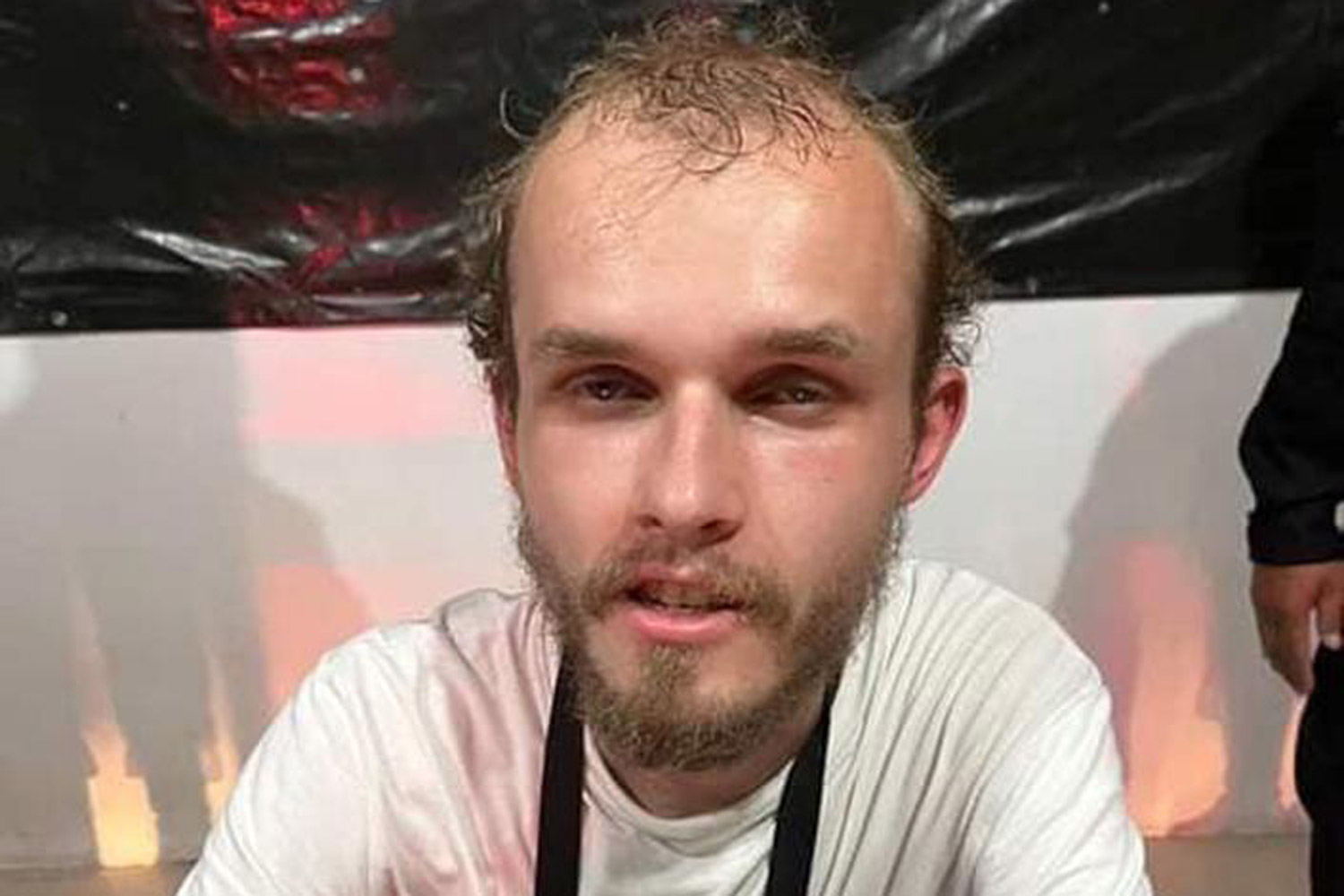
The Bangkok South Criminal Court has denied bail to the Polish man who allegedly murdered and dismembered his Ukrainian girlfriend.
Jan Jerzy Lagoda-Filippow, 25, was arrested on Monday in Sa Kaeo province’s Aranyaprathet district as he attempted to flee to Cambodia.
He was wanted for allegedly murdering and dismembering Alona Savchenko, 25, with a handsaw at a high-rise condominium in Bang Kholaem district in Bangkok after arriving as a tourist on April 29.
Wat Phaya Krai police in Bangkok later took him into custody and under Section 288 of the Criminal Code can detain him for 12 days.
The Bangkok South Criminal Court on Wednesday rejected Mr Lagoda-Filippow’s request for bail.
The court said the case is punishable by the maximum sentence, which could tempt the suspect to flee the country, a police source said. The suspect was arrested at the Immigration Office in the border town of Aranyaprathet, which he said showed his intention to flee.
The source said Wat Phraya Krai police found Savchenko’s body in a condominium unit on the 32nd floor. The body was covered with a blanket. They found a stab wound to her chest, and her left arm up from her wrist was dismembered.
Her head had been nearly severed. Police also found a 46-centimetre handsaw nearby.
According to the post-mortem, the victim might have been dead for 24 hours before her body was discovered.
According to investigators, Mr Lagoda-Filippow entered Thailand on a tourist visa on April 29. On Monday, he grabbed a taxi and asked the driver if he could find a store which sold deodorant.
He also told the driver he had just murdered his girlfriend and was seeking someone to help him to finish dismembering the body. The taxi driver later told the police that he initially believed the suspect was joking.
However, when the driver dropped him off at his condominium, the suspect kept talking about the murder. The driver also said a strong smell of blood came from the suspect while they were in the taxi. He said he told condo staff what the suspect said. Later they found the victim’s body.
Commentary: Seeking inspiration? Look no further than Singaporeâs SEA Games athletes
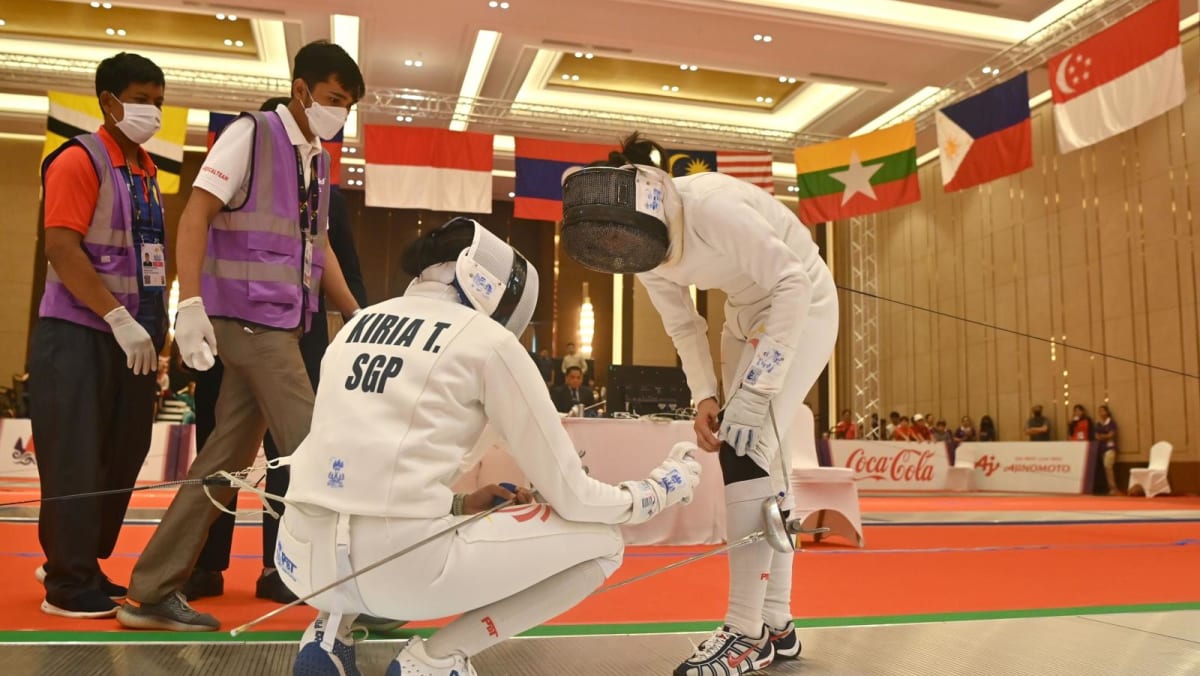
DEFINING GREATNESS
Team Singapore concluded their 18-day Games campaign with 51 gold, 43 silver and 64 bronze medals. Eight Games records were set, along with 17 national records and 40 personal best milestones.
On the overall medal table, Singapore finished in sixth place. Vietnam topped the ranking.
As with any other edition of the Games, this one came with glorious triumphs and agonising losses.
Particularly painful was the performance of the men’s football team, after their fifth consecutive elimination in the group stages.
But hidden within the headlines, Singapore’s athletes have quietly defined greatness. Not just through their displays of sporting prowess, but also by their character and tenacity.
Some have battled not just opponents but injury. Fencer Elle competed with partial tear on her medial collateral ligament and an anterior cruciate ligament strain, while jiu-jitsu exponent Noah Lim took to the mat with a dislocated pinky finger.
Water polo player Eugene Teo took to the pool for Singapore despite still recovering from a training injury that resulted in nine stitches in his right eye just weeks before the Games. In between periods, Teo would clean that eye with antibiotics and saline solution.
So inspired was water polo captain Lee Kai Yang that he would do one more interview in the scorching hot sun because it was important to highlight the sacrifice of teammates such as Teo.
“No one is like him,” Lee told CNA after.
Could construction in Ang Mo Kio have caused record-high temperatures?
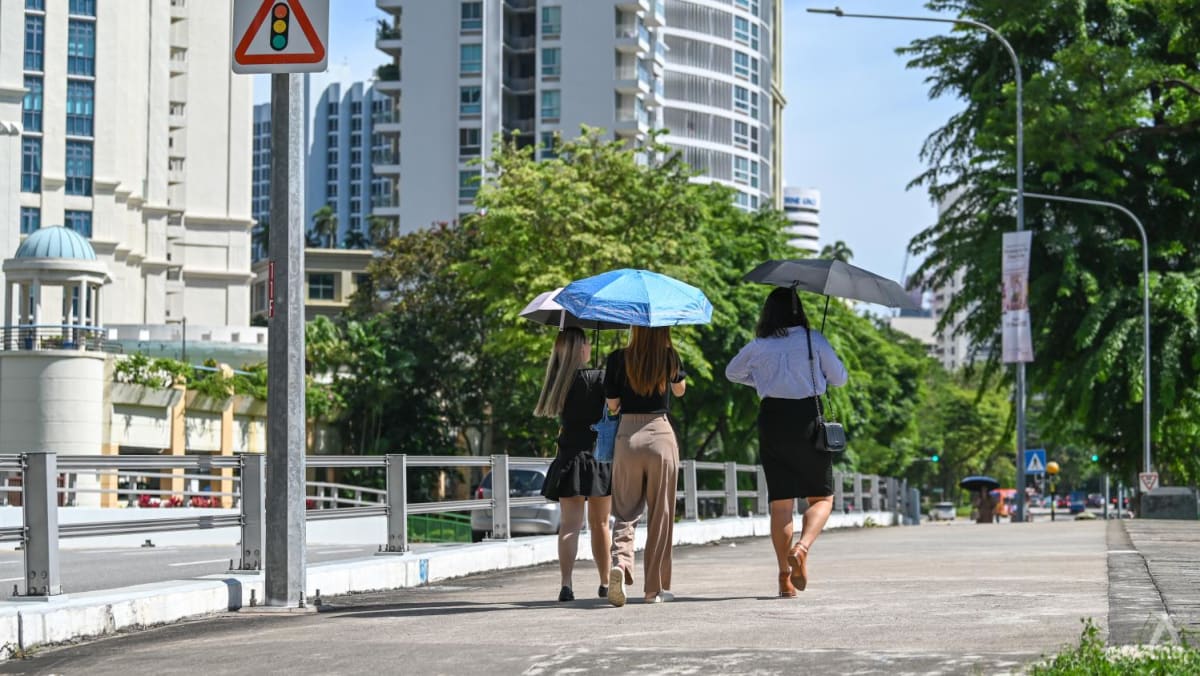
WHAT CAUSED THE RECORD TEMPERATURE THEN?
For a start, the inter-monsoon months of April and May are usually the warmest.
Daily maximum temperatures went past 34 degrees Celsius on most days in April and so far in May, with some days exceeding 35 degrees Celsius, the Meteorological Service Singapore (MSS) said.
“On May 13, 2023, the high temperatures were due to few clouds, no rain and light winds, which resulted in strong solar heating of land areas,” MSS said.
Apart from Ang Mo Kio, other parts of Singapore recorded high temperatures as well that day, an MSS spokesperson added. This includes Admiralty at 36.7 degrees Celsius, Paya Lebar at 36.6 degrees Celsius and Choa Chu Kang at 36.3 degrees Celsius.
Associate professor of urban climate Winston Chow from the Singapore Management University cited the lack of cloud cover over the weekend, in addition to climate change and the location of an automatic weather station in an urban area.
Weather experts described Ang Mo Kio as a highly urbanised area with a lack of forest and water bodies. And it’s not just Ang Mo Kio.
“Year after year, the highest mean temperatures are found mostly in the area bounded by Ang Mo Kio, Hougang, Bedok and Whampoa,” said Dr Koh, who is also co-chair of the Working Group for Asian Australian Monsoon under the World Climate Research Programme.
“So with a high baseline mean, daytime temperature can spike more easily in this region when the country experiences a hot anomaly.”
NUS’ Prof Roth said his research has shown that daytime heat exposure in Singapore is most severe in built-up areas that have low-rise buildings, a high percentage of impervious surfaces and a lack of vegetation. He named Serangoon and Woodlands as examples.
As to why Ang Mo Kio in particular, Prof Roth said there was “no easy answer”.
“The MSS weather station which has measured this value is, as far as I know, located on a rooftop, and hence its exposure may not be ideal to represent the temperature of a larger area.”
But the location is less important than the fact that there is a new record temperature in May, which is slightly higher than the 36.7 degrees Celsius measured in May 2022 at Admiralty, he said.
Both Ang Mo Kio and Admiralty represent heavily urbanised areas typically characterised by high daytime air temperatures, Prof Roth said.
“This is due to the abundance of heat-absorbing artificial materials (for example concrete and asphalt), absence of vegetated areas and lack of shade, which all promote efficient absorption of incoming solar radiation and subsequent heating of the near-surface air.”
WHAT’S TO COME
While rain is expected to ease the hot weather over the next few days, experts say that temperatures are still set to rise down the road.
NTU’s Prof Horton pointed to the weather phenomenon El Nino, which is expected to develop in the coming months, resulting in higher temperatures.
“For the last three or so years, we were in the cool wet phase called La Nina, and that’s why last year we experienced very high rainfall.
“But now the climate variability is reaching towards El Nino, so unfortunately for Singapore, the worst is yet to come,” he said.
“This time next year, we probably have an 80 per cent chance to have a full-blown El Nino. When we are in a full-blown El Nino, temperatures may be much hotter than we experienced on Saturday.”

